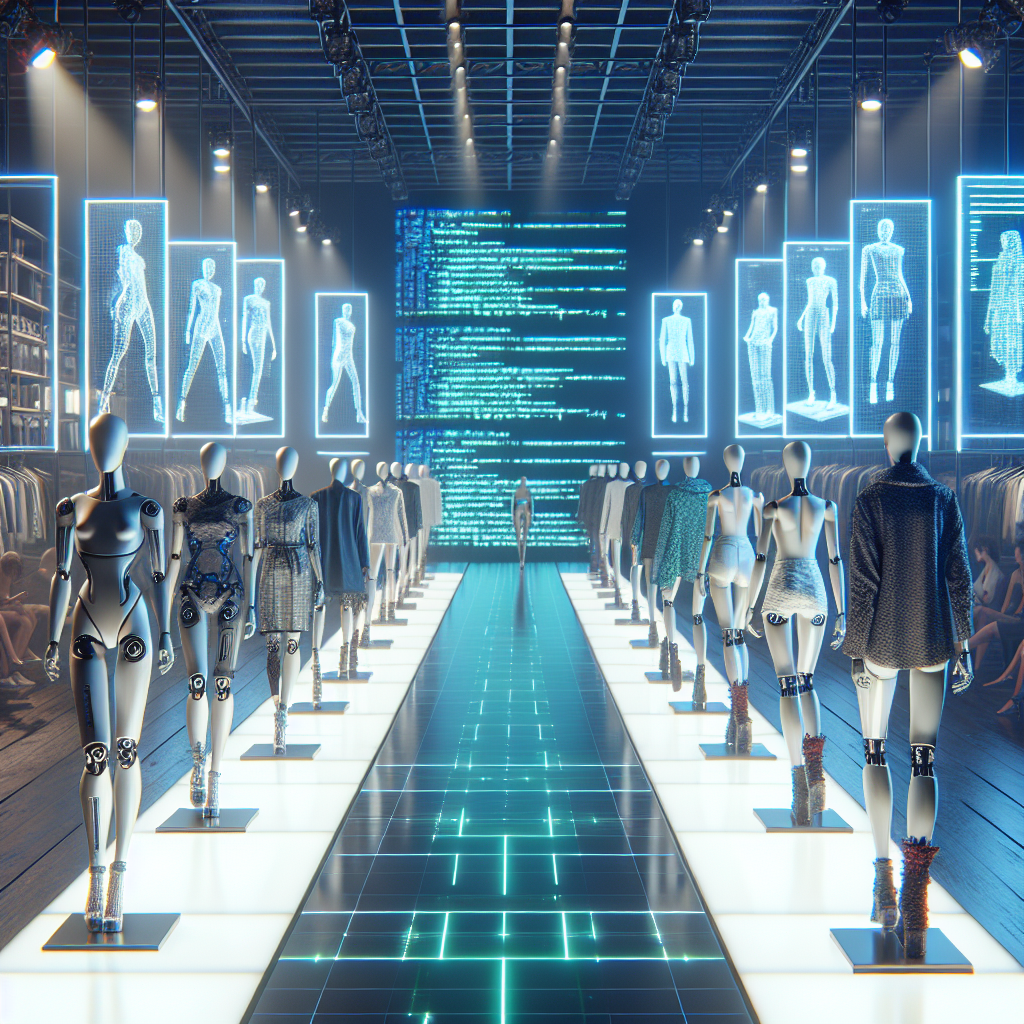Fashion Forward: How AI is Shaping the Runway
Artificial Intelligence (AI) has been making waves in various industries, revolutionizing how businesses operate and how consumers interact with products and services. In the world of fashion, AI is playing a significant role in shaping the runway and changing the way designers create, market, and sell their collections. From designing clothes to predicting trends and personalizing shopping experiences, AI is transforming the fashion industry in ways that were once thought unimaginable.
Designing with AI
One of the most exciting ways AI is shaping the runway is through the design process. AI-powered tools are enabling designers to create innovative and unique designs that push the boundaries of traditional fashion. These tools can analyze vast amounts of data, such as social media trends, customer preferences, and historical fashion data, to generate design ideas and patterns that are both on-trend and highly personalized.
For example, designer Anouk Wipprecht collaborated with technology company Intel to create a dress that responds to the wearer’s environment using AI. The dress, called the “Synapse” dress, is embedded with sensors that detect changes in the wearer’s surroundings, such as movement and sound, and respond by changing its shape and color. This collaboration between fashion and technology demonstrates the endless possibilities that AI offers for creating innovative and interactive designs.
Predicting Trends with AI
Another way AI is shaping the runway is through trend forecasting. AI-powered algorithms can analyze vast amounts of data from social media, fashion blogs, and online retailers to predict upcoming trends and consumer preferences. This data-driven approach to trend forecasting allows designers to stay ahead of the curve and create collections that resonate with their target audience.
One company leading the way in AI-powered trend forecasting is Edited. Edited uses AI algorithms to track and analyze millions of data points in real-time, allowing designers and retailers to make informed decisions about their collections. By predicting trends before they happen, designers can create collections that are not only on-trend but also highly marketable.
Personalizing the Shopping Experience
AI is also transforming the way consumers shop for fashion. AI-powered tools, such as virtual stylists and recommendation engines, are personalizing the shopping experience and helping consumers discover new styles and brands that match their preferences.
For example, online retailer Stitch Fix uses AI algorithms to analyze customer data and create personalized style profiles for each customer. These profiles help Stitch Fix’s stylists curate personalized clothing selections for each customer, leading to a more tailored and enjoyable shopping experience.
In addition, AI-powered recommendation engines, such as those used by Amazon and Netflix, are helping consumers discover new fashion brands and styles based on their browsing and purchasing history. These recommendation engines analyze customer data to suggest products that match the customer’s preferences, leading to increased customer satisfaction and loyalty.
The Future of AI in Fashion
As AI continues to evolve and become more sophisticated, its impact on the fashion industry will only grow. From designing clothes to predicting trends and personalizing shopping experiences, AI is reshaping the runway and changing the way designers create, market, and sell their collections.
In the future, we can expect to see even more innovative uses of AI in the fashion industry. Virtual fitting rooms, AI-powered sizing recommendations, and personalized marketing campaigns are just a few examples of how AI will continue to revolutionize the fashion industry. As designers and retailers embrace AI technologies, we can expect to see more diverse and inclusive collections that cater to a wider range of consumers.
FAQs
Q: How is AI used in designing clothes?
A: AI is used in designing clothes by analyzing vast amounts of data, such as social media trends, customer preferences, and historical fashion data, to generate innovative and unique design ideas. AI-powered tools can help designers create designs that are both on-trend and highly personalized.
Q: How does AI predict trends in fashion?
A: AI predicts trends in fashion by analyzing data from social media, fashion blogs, and online retailers to identify patterns and consumer preferences. By analyzing this data, AI algorithms can forecast upcoming trends and help designers create collections that resonate with their target audience.
Q: How does AI personalize the shopping experience?
A: AI personalizes the shopping experience by using virtual stylists and recommendation engines to help consumers discover new styles and brands that match their preferences. These AI-powered tools analyze customer data to create personalized shopping experiences that lead to increased customer satisfaction and loyalty.

